Bitterness not your thing?
If you’re tired of the strong, bitter taste of traditional tea or coffee, you might be thinking, “What does herbal tea taste like?“
Generally, herbal tea tastes like the herbs, fruits, flowers, or spices used in the tea.
Herbal tea offers a delightful departure from the strong, bitter flavors of traditional tea and coffee.
Instead of bitterness, you’ll find herbal teas to be milder and more diverse in taste.
The exact flavor can vary significantly depending on the herbs used, but common notes include soothing, earthy, floral, and sometimes even fruity undertones.
So, if you’re looking for a gentler and more nuanced taste experience, herbal tea might be your cup of, well, tea!
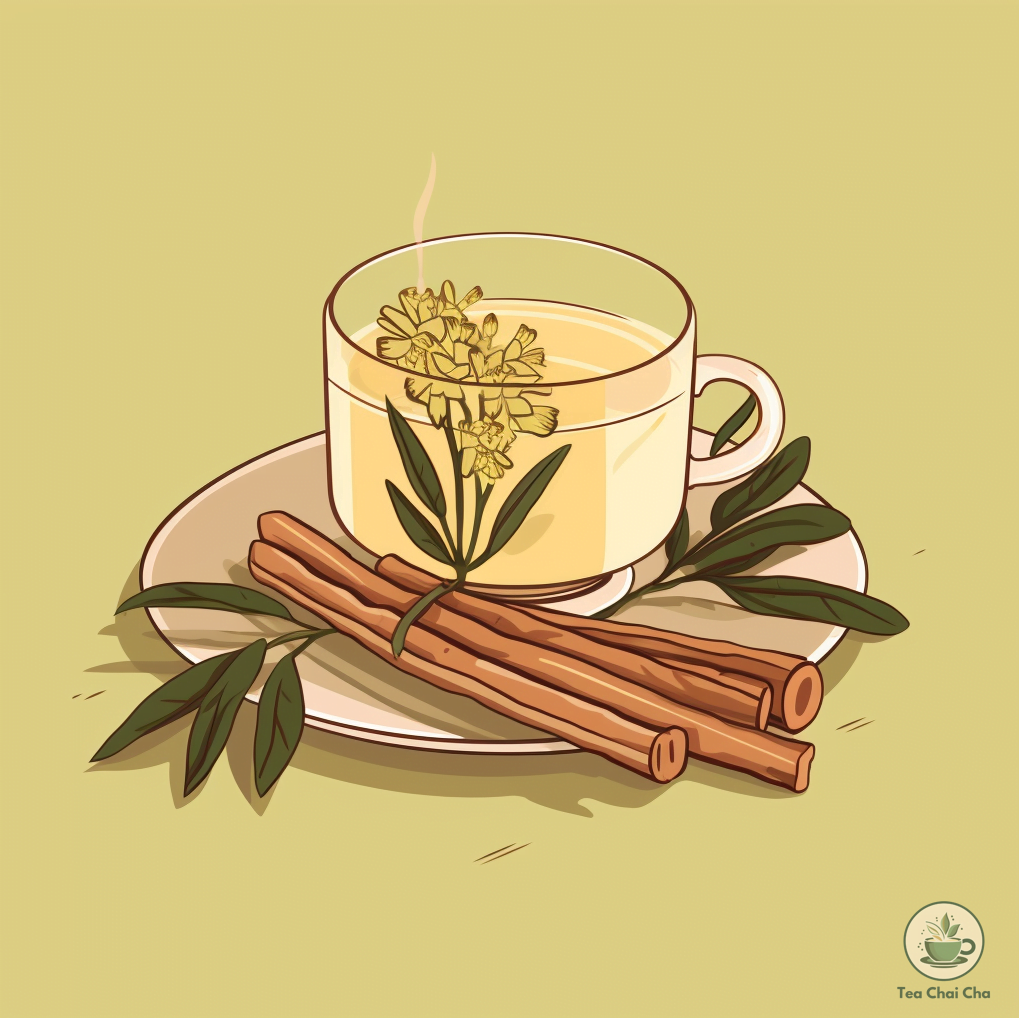
What Does Chinese Herbal Tea Taste Like?
Chinese herbal tea can have various flavors, but it often offers a tasty blend of earthy, floral, and sometimes slightly bitter notes.
These teas are often a combination of different herbs, each contributing its unique taste profile.
You might detect earthy tones reminiscent of the natural landscapes where these herbs are grown.
Additionally, floral notes can bring a pleasant and aromatic quality to the brew, making it quite soothing.
Sometimes, Chinese herbal teas can have a hint of bitterness because of roots and barks with strongest active ingredients.
But it’s usually mild and well-balanced with the other flavors.
This bitterness can even be considered a desirable aspect by some tea drinkers, as it adds depth to the overall taste.
Why Does Herbal Tea Taste So?
Herbal tea gets its unique taste from the various herbs and botanical ingredients used in its preparation.
Unlike traditional teas that primarily come from the Camellia sinensis plant, herbal tea is crafted using a wide array of herbs, flowers, roots, and other botanical ingredients.
Each of these ingredients contributes its distinct flavors and aromas.
Each of these ingredients carries its own flavor and aroma.
Take chamomile, for instance; it adds a soothing, slightly floral note to the mix.
On the other hand, peppermint delivers that refreshing, minty kick we all know and love.
With such a diverse array of herbs at play, the flavor possibilities are practically endless.
Additionally, the way these ingredients are prepared plays a role.
Steeping herbal tea allows the hot water to extract the natural oils and compounds from the herbs, infusing the liquid with their flavors.
This gentle infusion process helps preserve the authentic taste of the herbs.
5 Different Tastes of Herbal Tea
Each herbal tea has its distinct flavors, and I’ve had the pleasure of sipping many of them.
You’ll be amazed at the range of flavors and how nature creates these delightful taste profiles.
Here, I’ll highlight some common tasting notes and provide examples of herbal teas that exhibit these flavors.
1. Earthy
When it comes to herbal teas, earthy tones are like a sip of nature’s essence.
Imagine taking a stroll through a serene forest, the earth beneath your feet.
That’s what it feels like in your cup.
This taste comes from herbs like chamomile and echinacea, which draw their deep, grounding flavors from the soil they grow in.
2. Floral
Floral notes in herbal teas are all about elegance and aromatics.
Picture yourself in a blooming garden, surrounded by the sweet scent of flowers.
That’s the experience when you sip herbal teas like lavender or rosehip.
3. Fruity
Fancy a touch of fruitiness in your tea?
Herbal teas like hibiscus and rosehip bring just that.
It’s akin to biting into a ripe, juicy berry, but in liquid form.
The slight tanginess adds a playful twist to your cup, making it a tasty balance between sweet and tart.
4. Minty
Craving a burst of freshness?
Minty herbal teas, with herbs like peppermint and spearmint, offer precisely that.
Think of a cool breeze on a warm day.
These teas wake up your senses with a refreshing, brisk flavor that’s extremely soothing.
5. Spicy
For those moments when you need a cozy, comforting embrace, think spicy warmth.
Spices like cinnamon, ginger, and cloves infuse your tea with a soothing, warm feeling.
It’s perfect for unwinding on chilly evenings.
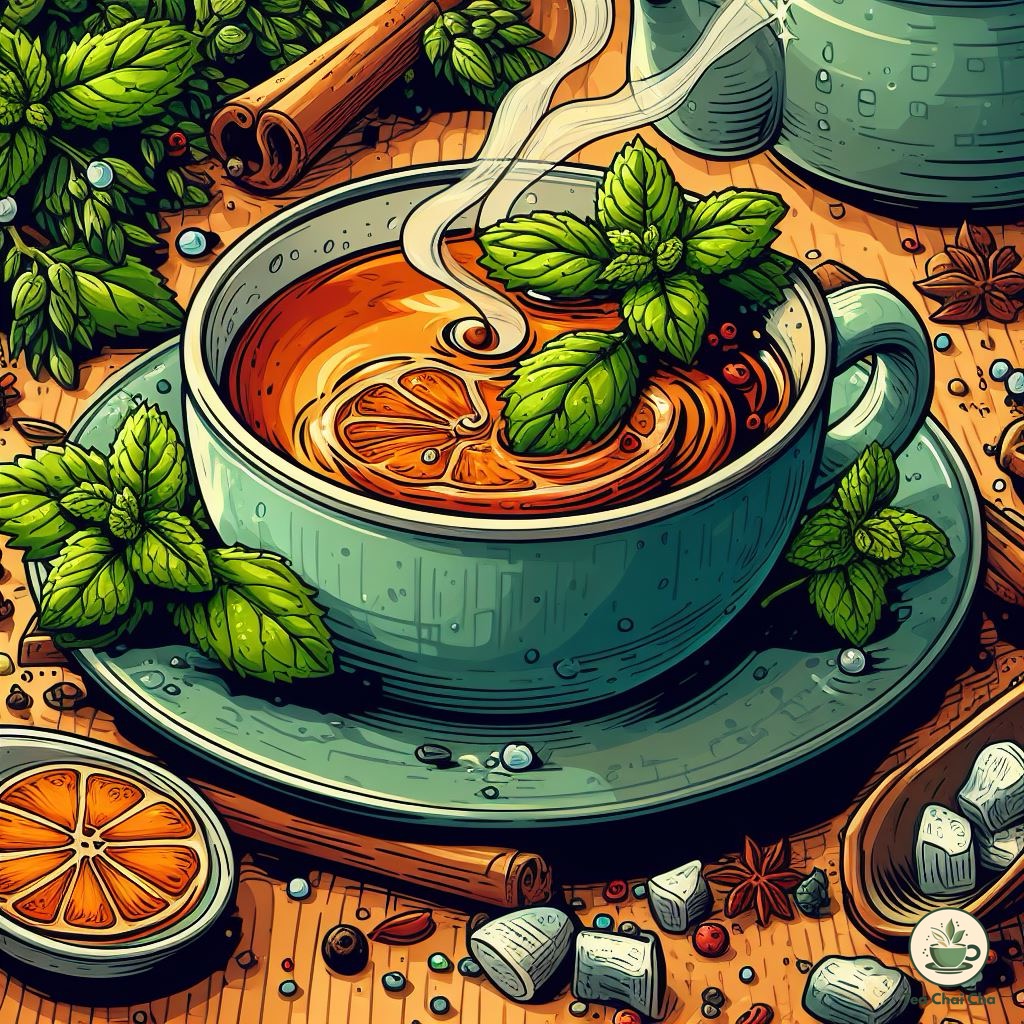
What Do Different Herbal Teas Taste Like?
Each herbal tea has its unique tasting notes, and I’m here to talk about the most popular ones.
-> Peppermint Tea Taste
If you’re looking for a tea that’s like a breath of fresh air, peppermint tea is the one for you.
It boasts a crisp, invigorating taste with bold hints of mint.
This refreshing flavor comes from the natural oils found in peppermint leaves.
-> Chamomile Tea Taste
Chamomile tea is the epitome of relaxation in a cup.
Its taste is mild and soothing, with delicate floral undertones.
The gentle, calming notes in chamomile tea are a result of the dried chamomile flowers used for brewing.
-> Ginger Tea Taste
For a tea with a kick, try ginger tea.
It packs a spicy, zesty punch that can warm you up from the inside out.
The fiery flavor of ginger root infuses the tea, making it perfect for chilly days.
-> Lavender Tea Taste
Lavender tea is a fragrant delight.
It offers a floral taste with a subtle sweetness that’s incredibly soothing.
The lavender buds used in this tea release their aromatic essence, creating a calming and aromatic brew.
-> Hibiscus Tea Taste
If you crave a tangy and vibrant tea experience, hibiscus tea won’t disappoint.
It’s bursting with a tart, fruity flavor thanks to the dried hibiscus petals.
This crimson infusion is as visually appealing as it is tasty.
Lorem ipsum dolor sit amet, consectetur adipiscing elit. Ut elit tellus, luctus nec ullamcorper mattis, pulvinar dapibus leo.
Which Herbal Tea Type Is Best for Who?
| Herbal Tea | Taste | Best For |
|---|---|---|
| Chamomile Tea | Mild, floral, and soothing | Relaxation and better sleep. |
| Peppermint Tea | Refreshing and minty | Digestive issues and a pick-me-up. |
| Lavender Tea | Delicate, floral, and calming | Stress relief and relaxation. |
| Ginger Tea | Spicy and warming | Nausea and digestive health. |
| Lemon Balm Tea | Citrusy and slightly sweet | Mood lift and well-being. |
| Hibiscus Tea | Tart and fruity | Vibrant, fruity taste and potential blood pressure benefits. |
| Rooibos Tea | Earthy and slightly sweet | Caffeine-free, unique earthy flavor. |
| Echinacea Tea | Mildly earthy and herbal | Immune system boost. |
| Lemon Ginger Tea | Zesty, citrusy, and spicy | Digestion aid and immune support. |
Effect of Herbal Tea Processing on Flavor
Now that we’ve set the stage about what herbal tea tastes like, let’s learn how herbal teas are processed and how that very process can have a profound effect on the flavors you savor in your cup.
1. Harvesting the Goodness
First things first, the flavor journey of herbal tea starts with the harvest.
The quality of the herbs, flowers, or leaves picked plays a vital role.
Fresher ingredients often result in a more vibrant and authentic taste.
So, when you sip herbal tea, you’re essentially tasting the essence of the carefully chosen plants.
2. Drying and Withering
Once harvested, these botanical treasures undergo drying or withering.
This process helps reduce moisture content, preserving the flavor compounds within the leaves or flowers.
The method and duration of drying can impact the taste.
Slower drying often intensifies the herbal nuances, while faster drying may maintain a lighter, crisper flavor profile.
3. Blending Magic
Herbal teas have a range of flavors, and blending is where the magic happens.
Tea artisans mix different herbs and botanicals to create unique taste profiles.
Think of it as crafting a melody of flavors.
The choice of ingredients and their proportions can result in a balanced blend or a bold and adventurous brew.
4. Brewing Brilliance
Now, it’s time for your part in the process: brewing herbal teas.
The temperature of the water, steeping time, and even the type of infuser you use can influence the flavor.
Some herbal teas shine when steeped in hot water for a longer time, while others prefer a quick dip in warm water.
It’s all about finding the right tempo for your taste buds.
Other Teas That Taste like Herbal Tea
If you’re a fan of herbal teas, you might be curious about other options that offer similar flavors but come from the world of true teas (Camellia sinensis).
On the flip side, maybe you’re a true tea lover and want to venture into the herbal tea realm.
Well, I have some alternatives that bridge the gap between these two tea worlds.
| True Teas with Herbal-Like Flavors | Herbal Teas with True Tea-Like Flavors |
|---|---|
| Jasmine Tea | Rooibos Tea |
| Chai Tea | Peppermint Tea |
| Earl Grey Tea | Chamomile Tea |
| White Tea | Hibiscus Tea |
| Oolong Tea | Lemongrass Tea |
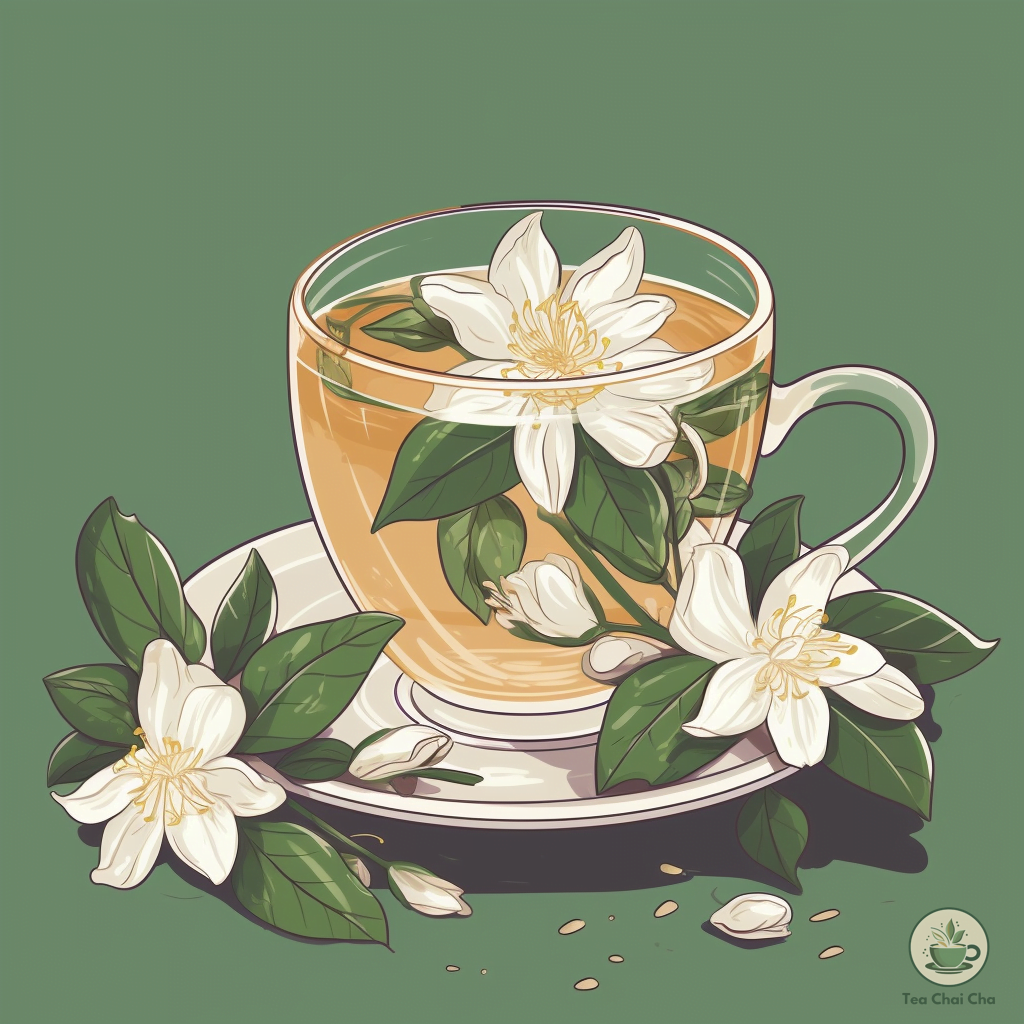
True Teas with Herbal-Like Flavors
If you’ve already tried herbal teas and want to explore true teas now, these teas would work very well.
1. Jasmine Tea
Jasmine tea, often made with green tea leaves, is infused with the delicate aroma and flavor of jasmine blossoms.
Its floral notes and sweetness make it a great choice for those who enjoy the gentleness of herbal teas.
2. Chai Tea
Chai is a spiced tea made from black tea leaves blended with spices like cardamom, cinnamon, and cloves.
Its warm and aromatic profile can remind you of certain herbal chai blends, especially when served with milk and honey.
3. Earl Grey Tea
If you appreciate the citrusy and aromatic qualities of herbal teas, you’ll likely enjoy Earl Grey.
It’s black tea infused with bergamot oil, which gives it a zesty, fragrant twist akin to herbal infusions.
4. White Tea
White tea boasts a delicate, mild flavor profile that’s often described as slightly sweet and floral.
It’s akin to the subtlety found in some herbal teas, making it a pleasant choice for those seeking a milder alternative.
5. Oolong Tea
Oolong tea falls between black and green tea, offering a diverse range of flavors.
Some oolong varieties have fruity and floral notes reminiscent of certain herbal infusions.
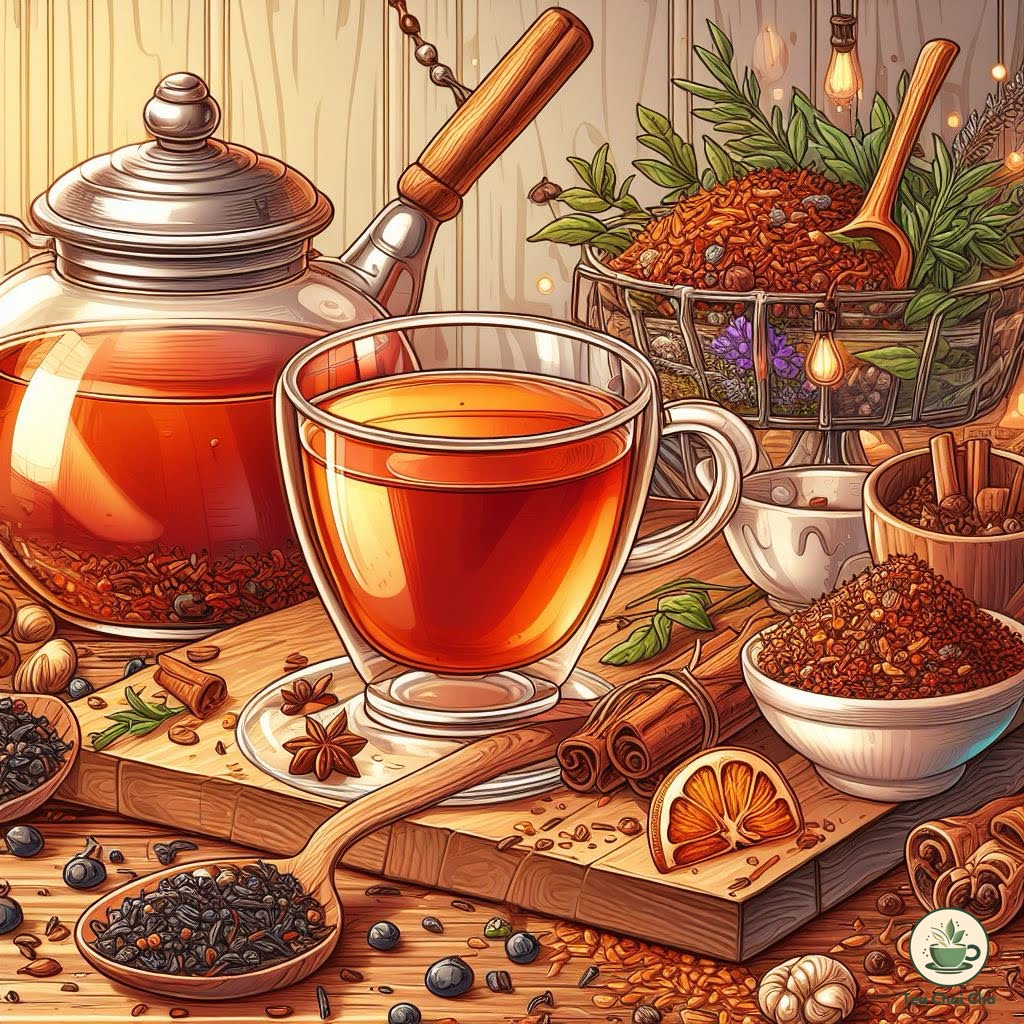
Herbal Teas with True Tea-Like Flavors
Here are some herbal tea options that you can try for a smooth transition from true teas.
1. Rooibos Tea
Rooibos, a caffeine-free herbal tea from South Africa, has a rich, earthy flavor that’s somewhat similar to black tea.
It’s a great option for those wanting a tea-like experience without the caffeine.
2. Peppermint Tea
If you’re a fan of the refreshing qualities of green tea, you’ll love peppermint tea.
It offers a crisp, minty taste that can be reminiscent of some green tea varieties.
3. Chamomile Tea
Chamomile tea’s soothing and floral notes can be reminiscent of white or green teas.
It’s a caffeine-free choice with a delicate, calming character.
4. Hibiscus Tea
Hibiscus tea has a vibrant red color and a tart, fruity flavor that can be quite reminiscent of fruity black or green teas.
It’s a caffeine-free alternative that’s both flavorful and refreshing.
5. Lemongrass Tea
Lemongrass tea has a citrusy, lemony aroma and taste that can be similar to the citrus notes in some true teas.
It’s a caffeine-free herbal option with a zingy twist.
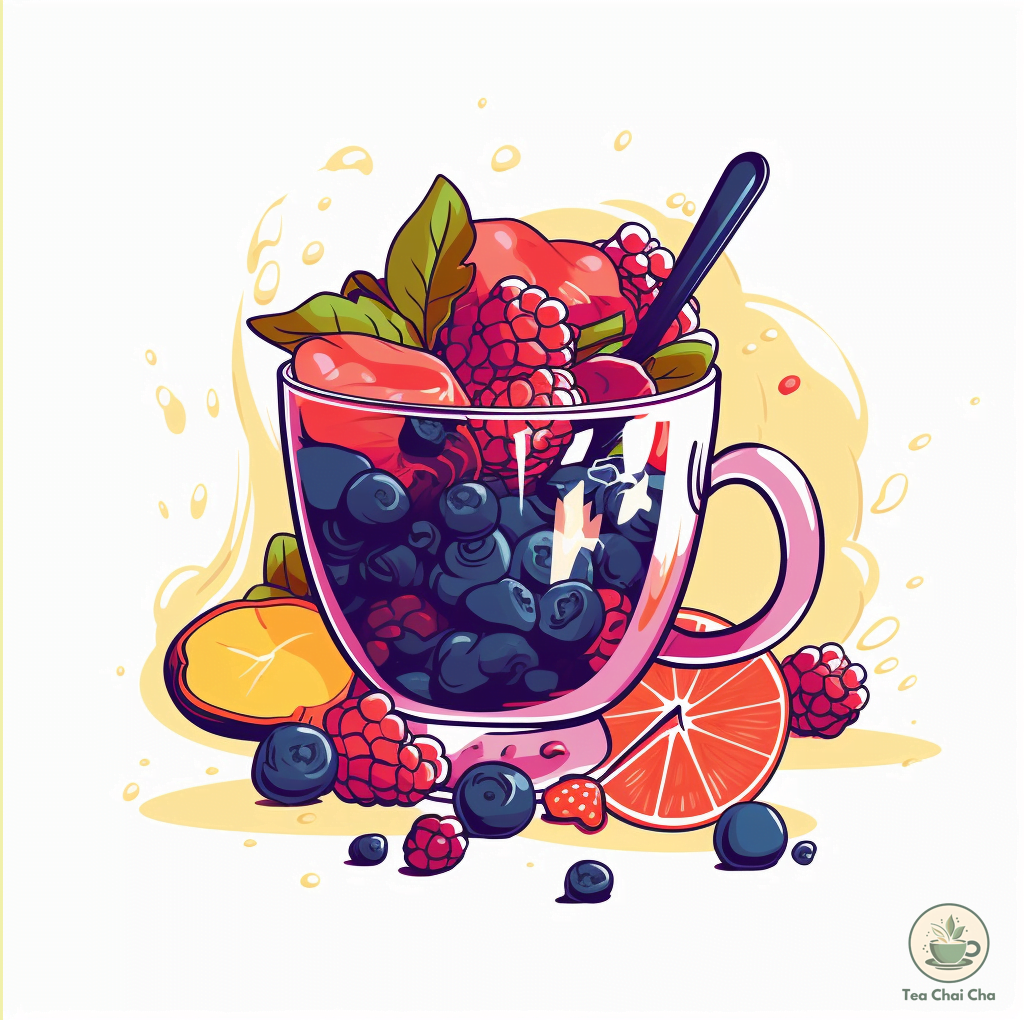
What Flavors Pair Well with Herbal Tea
If you’re sipping on a soothing cup of herbal tea, you might be wondering how to elevate your tea-drinking experience by pairing it with delicious flavors.
In this section, I have different flavor pairings for many types of herbal teas.
-> Fruity Companions for Herbal Bliss
1. Herbal Tea: Hibiscus Tea
- Flavor Profile: Tart and fruity.
Pair it with:
- Fresh berries like strawberries, raspberries, or blueberries.
- A slice of citrus like oranges or grapefruits.
2. Herbal Tea: Chamomile Tea
- Flavor Profile: Delicate and floral.
Pair it with:
- A drizzle of honey for a touch of natural sweetness.
- A piece of pear for a subtle fruity contrast.
-> Savory Treats to Complement Earthy Notes
1. Herbal Tea: Rooibos Tea
- Flavor Profile: Earthy and slightly nutty.
Pair it with:
- Almonds or cashews for a nutty crunch.
- A piece of dark chocolate with a high cocoa content for a rich, complementary flavor.
2. Herbal Tea: Peppermint Tea
- Flavor Profile: Refreshing and minty.
Pair it with:
- A light and savory caprese salad with tomatoes, mozzarella, and fresh basil.
- A small plate of olives and feta cheese for a Mediterranean twist.
-> Sweet Temptations for a Flavorful Contrast
1. Herbal Tea: Lavender Tea
- Flavor Profile: Floral and slightly sweet.
Pair it with:
- A piece of shortbread or biscotti for a sweet, buttery contrast.
- A scoop of vanilla ice cream to create a delightful herbal-infused float.
2. Herbal Tea: Ginger Tea
- Flavor Profile: Spicy and warming.
Pair it with:
- Dark chocolate truffles to balance the heat with rich sweetness.
- A slice of apple pie for a comforting combination of flavors.
-> Zesty Delights to Enhance Citrus Notes
1. Herbal Tea: Lemon Verbena Tea
- Flavor Profile: Citrusy and lemony.
Pair it with:
- A slice of lemon cake for an intensified lemon experience.
- A bowl of fruit salad with oranges, kiwis, and pineapple.
2. Herbal Tea: Orange Peel Tea
- Flavor Profile: Bright and citrusy.
Pair it with:
- A light summer salad with mixed greens, mandarin oranges, and a citrus vinaigrette.
- A plate of chicken stir-fry with orange zest for a savory-sweet fusion.
How to Pick the Best Tasting Herbal Tea
Now, you’re probably on a quest to find the best-tasting herbal brew for your taste buds.
I’ve sipped my fair share of herbal teas over the years and learned a thing or two about what makes them truly exceptional.
Here, I’ll share some practical insights to help you pick the perfect herbal tea.
-> Start with Your Preferences
Before you check different types of herbal teas, it’s essential to understand your own preferences.
Ask yourself:
- Do You Prefer Bold or Subtle Flavors?
Are you looking for a robust, full-bodied tea, or do you lean towards gentler, milder tastes?
Your preference here will narrow down your options.
- Sweet or Savory? Some herbal teas offer a natural sweetness, while others provide earthy or savory notes.
Which flavor profile appeals to you more?
- Caffeine or Caffeine-Free? Herbal teas are naturally caffeine-free.
But if you want a little pick-me-up, you can consider blends with ingredients like yerba mate or guayusa.
- Aroma Matters: The aroma of a tea can significantly impact your enjoyment.
Are you drawn to floral, fruity, or herbal scents?
-> Explore Single Ingredients
One of the best ways to discover your favorite herbal tea is to start with single ingredients.
Here are a few popular options to consider:
- Peppermint: If you crave a refreshing, minty flavor, peppermint is a classic choice. It’s known for its soothing properties too.
- Chamomile: Chamomile tea is celebrated for its calming effect and subtle apple-like taste. Perfect for winding down.
- Ginger: A spicy and invigorating option, ginger tea can be both warming and soothing.
- Lavender: For a floral twist, try lavender tea. It’s gentle, aromatic, and often paired with other herbs for a unique blend.
- Hibiscus: If you fancy a tart and tangy brew, hibiscus tea might be your cup of tea. It’s vibrant in color and taste.
-> Explore Blends
Once you’ve discovered some single ingredients you enjoy, it’s time to venture into blends.
Herbal tea blends can be a delightful mix of flavors and aromas.
Here are a few to consider:
- Chai: A blend of spices like cinnamon, cardamom, and cloves, combined with black tea or caffeine-free options, creates a warming and aromatic brew.
- Fruit Infusions: These blends often include dried fruits like berries, citrus peels, and apples, resulting in a naturally sweet and fruity cup.
- Herbal Medleys: Some teas combine various herbs and botanicals, providing a complex and layered taste experience.
-> Ask for Recommendations
Don’t hesitate to seek recommendations from friends, family, or even your local tea shop.
They might suggest unique blends or hidden gems you haven’t considered.
Sharing tea discoveries can be a delightful experience in itself.
-> Trust Your Gut (and Taste Buds)
Remember, there’s no one-size-fits-all when it comes to herbal tea.
Your taste preferences may evolve over time, so keep experimenting.
And most importantly, savor each cup of tea.
The process of discovering the best-tasting herbal tea is as enjoyable as the tea itself.
Related Guides on Tea Taste
Floral Herbal Teas
- What Does Rose Tea Taste Like? Is It Flowery or Fruity?
- Rosehip Tea Taste: Tangy, Sweet, Floral. But WHY?
- What Does Chamomile Tea Taste Like?
- What Does Jasmine Tea Taste Like?
- What Does Passion Flower Tea Taste Like? Why It’s Woody!
- What Does Lavender Tea Taste Like? 6 Tips for Tasty Pick!
- What Does Hibiscus Tea Taste Like? It’s Tart and Tangy!
Leafy Herbal Teas
- What Does Rooibos Tea Taste Like? How Sweet Is It?
- What Does Mullein Tea Taste Like? Taste of a Cough Syrup or Not?
- Raspberry Leaf Tea Taste: Will Your Pregnancy Cravings Accept It?
- Mugwort Tea Taste: Weedy, Bitter, Minty! 7 Similar Teas!
- What Does Peppermint Tea Taste Like? 9 Tasty Mint Types
Mushroom Herbal Teas
Fruity Herbal Teas
- What Does Elderberry Tea Taste Like? 5 Similar Tasting Teas
- What Does Winter Melon Tea Taste Like? Cucumbery Taste!
- What Does Soursop Tea Taste Like? Tropical or Muskier?
